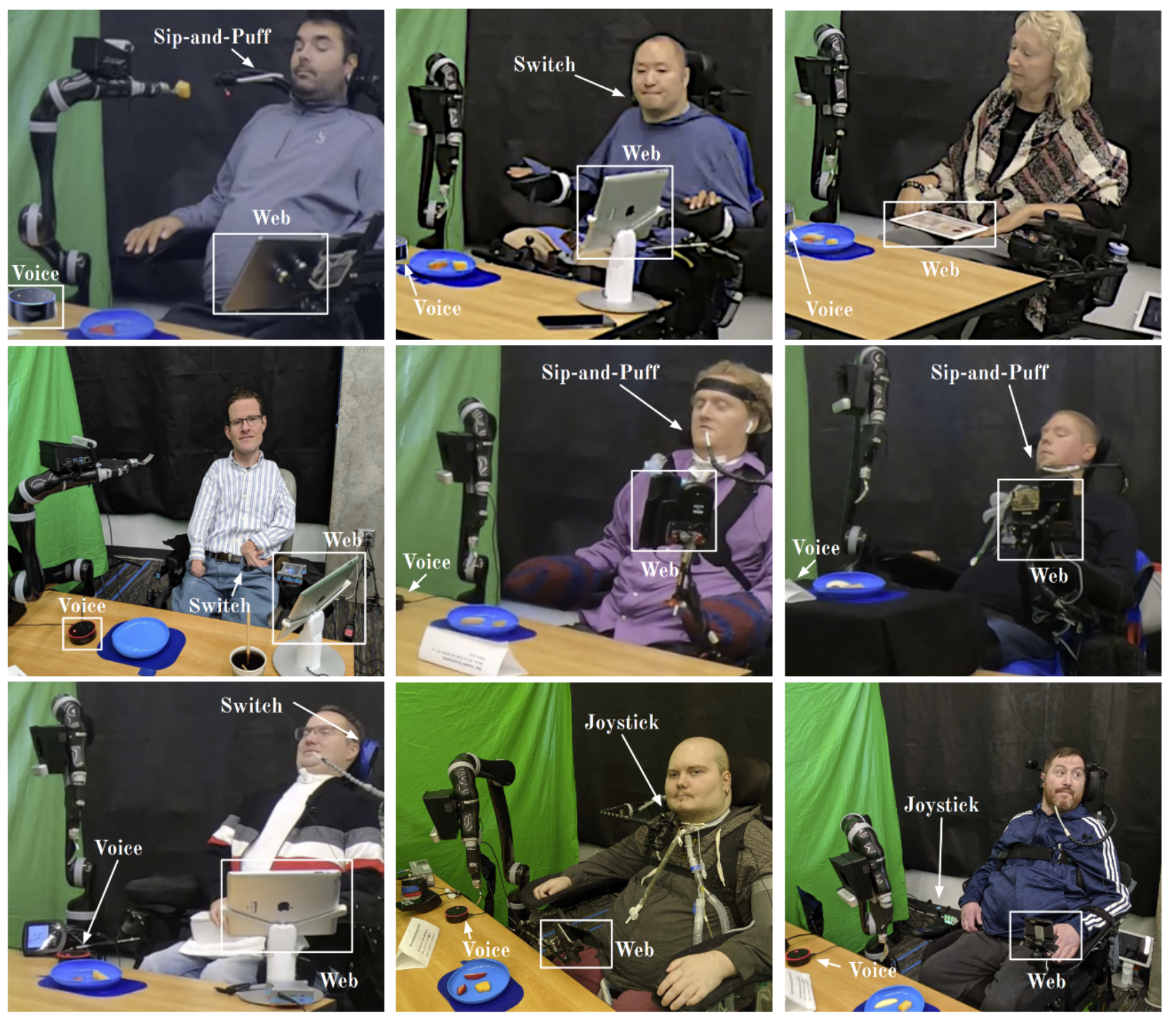Is more autonomy always better? Exploring preferences of mobility-impaired users in robot-assisted feeding
A robot-assisted feeding system can potentially help a user with upper-body mobility impairments eat independently. However, au- tonomous assistance in the real world is challenging because of varying user preferences, impairment constraints, and possibility of errors in uncertain and unstructured environments. An autonomous robot-assisted feeding system needs to decide the appropriate strat- egy to acquire a bite of hard-to-model deformable food items, the right time to bring the bite close to the mouth, and the appropriate strategy to transfer the bite easily. Our key insight is that a system should be designed based on a user’s preference about these vari- ous challenging aspects of the task. In this work, we explore user preferences for different modes of autonomy given perceived error risks and also analyze the effect of input modalities on technology acceptance. We found that more autonomy is not always better, as participants did not have a preference to use a robot with partial autonomy over a robot with low autonomy. In addition, partici- pants’ user interface preference changes from voice control during individual dining to web-based during social dining. Finally, we found differences on average ratings when grouping the partici- pants based on their mobility limitations (lower vs. higher) that suggests that ratings from participants with lower mobility limita- tions are correlated with higher expectations of robot performance.
